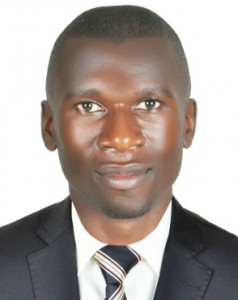Health services in Uganda are at risk in the COVID-19 outbreak through various mechanisms. Clinicians and direct care givers of COVID-19 patients have a disproportionately higher mortality than the general age-adjusted population. Closure of logistics-related workplaces and transport services interrupts supply lines. Travel bans and reduction in public transportation limit access, and public perceptions of increased risk of SARS-CoV-2 infection near health facilities dissuade attendance, whereas clinic activities considered “non-urgent,” such as antenatal care, may be postponed. Uganda has a relatively fragile health system with limited capacity to expand critical care services
By Zziwa Joshua
Health rights Activist, PHM-Ug/HURIC zziwajoshua73@gmail.com
Bukenya Denis Joseph
Coordinator, HURIC denisbukenya@gmail.com
The Effects of the COVID-19 Pandemic on the Health Service Delivery Systems in Uganda
Uganda has an organized national health system and health delivery in place within the strategic frame work and focus (Nakisozi, 2014). The Health Service Delivery System in Uganda is decentralized within national, districts and health sub districts. The national health system is comprised of both private and public sectors. The private health sector is comprised of Private Not for Profit (PNFP), Private Health Practitioners (PHPs), and Traditional Contemporary Medicine Practitioners (TCMPs). These private sectors contribute to about 50% of the health care delivery. The public sectors include Government Health facilities; Health services departments of different Ministries. Several Ministry of Health (MOH) functions have been delegated to National Autonomous Institutions like National Drag Authority (NDA).
However, the Ugandan Health System’s Service Delivery has been negatively impacted so far by the COVID-19 Pandemic. The COVID-19 pandemic is redirecting focus and prioritization of health systems globally. Public health responses have been dominated by enforced social distancing and stay-at-home interventions, characterized as “lockdowns,” advocated by the World Health Organization (WHO). Health services are at risk in the COVID-19 outbreak through various mechanisms. Clinicians and direct care givers of COVID-19 patients have a disproportionately higher mortality than the general age-adjusted population. Closure of logistics-related workplaces and transport services interrupts supply lines. Travel bans and reduction in public transportation limit access, and public perceptions of increased risk of SARS-CoV-2 infection near health facilities dissuade attendance, whereas clinic activities considered “non-urgent,” such as antenatal care, may be postponed. Uganda has a relatively fragile health system with limited capacity to expand critical care services.
There have been reported cases of clinicians discriminating against patients with liked symptoms to COVID-19 for fear of the likelihood of being quarantined for the 14 mandatory days through contact tracing or may be the risk of infection with SARS-CoV-2. This has been reported about in one of the daily newspapers in Uganda where a one Ms. Natalie Asiimwe and her 72-year-old father Ambrose who has a pneumonia health record were turned away by two private hospitals in Kampala on basis that the patient had to first present COVID-19 results (Draku, 2020). This has further set a very dangerous trend in the already weakened health systems in Uganda and service delivery owing to the situation that the MOH in Uganda has designated treatment centers and has put in place strict adherence rules to all private hospitals not to treat patients with COVID-19 likely symptoms.
It is currently trait law that all patients with symptoms similar to COVID-19 in Uganda to get treatment from their nearby health facilities that are not designated as COVID-19 Centers need to present a COVID-19 certificate from the MOH in Uganda. I concur with the spirit in which this standing order was issued but make the argument that this will deter and dissuade many Ugandan from accessing care from the nearby facilities. Catastrophically a coincidence, the MOH in Uganda was overwhelmed by the expenditure on the mass tests for COVID-19 and have levied fees on voluntary testing and the track drivers entering Uganda which are exorbitant for the lay person. This has indeed negatively impacted the health systems delivery and access. One would rightly state that the directive to the private health systems not to treat people with like symptoms to COVID-19 was a ploy for them to make money from the vulnerable and unsuspecting public.
As the health experts are working on the COVID-19 the rest of the health challenges have not gone away; so, it would be prudent that we put in place long permanent health programs that focus on helping our people even in the future. The MOH in conjunction with the immediate stake holders, like Legislature and the Civil Society community, owe the public a responsibility to see to it that health policies are put in place, funded and strictly monitored. This will eventually put to an end the mix-up of infection cases and the people with various health complications will no longer be stigmatized but rather given the due care more especially during in these challenging times of the pandemic.In addition medical personnel, testing equipment and personal protective equipment (PPEs) should be availed to some of the major health facilities both private and public country wide as a means of simplifying health service delivery and curbing the further spread of Corona Virus.
Bibliography
Charles Patrick Davis, M. P. (2020, March 20). Diseases and Conditions. Retrieved from On Health: https://www.onhealth.com/content/1/respiratory_infections_causes
Draku F. (2020, September 15). New/National. Retrieved from Daily Monitor: https://www.monitor.co.ug/uganda/news/national/private-hospitals-turn-away-pneumonic-patients-2014894
Nakisozi, L. (2014). National Health Care Systems in Uganda. Kampala: Global Health Corps,2020.
Bell D., Schultz K.H., Kiragga A.N. et al. Predicting the Impact of COVID-19 and the Potential Impact of the Public Health Response on Disease Burden in Uganda. The American Journal of Tropical Medicine and Hygiene, Volume 103, Issue 3, 2 Sep 2020 http://www.ajtmh.org/docserver/fulltext/14761645/103/3/tpmd200546.pdf?expires=1601371842&id=id&accname=guest&checksum=B0C6963A606AAE8AFBA7D8BF36E74702
World Health Organisation (2002), https://www.who.int/health-topics/chronic-respiratory-diseases#tab=tab_2 [Accessed September 21, 2020 at 9:19 am]
World Health Organisation (2002) report on analysis of estimates of the environmental attributable fraction, by disease https://www.who.int/quantifying_ehimpacts/publications/preventingdisease5.pdf [Accessed September 19, 2020 at 3:40 pm]

